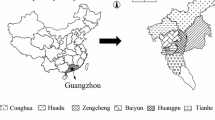Abstract
Geotechnical processes such as subsidence, seepage, scouring, extreme temperatures as well as geological events pose constructional challenges even despite advancements in design codes, ground investigation techniques and numerical analysis. This paper analyses a case record where subsidence and damages to existing structures occurred adjacent to a location where dewatering works were being carried out for a new pipeline. Initially, the damages were thought to be solely linked to the dewatering effects, but it was still a puzzle as to why the problems only occurred at particular locations and not over the entire dewatered area. To solve the puzzle, forensic ground investigation and geophysics were performed. Based on borehole and CPT results, the ground profile was interpreted and compared with results from two parallel geophysical methods. Both of these revealed that the problem area was part of an old channel that had been dredged decades earlier and reclaimed by filling with loose material. This was corroborated by theoretical calculations of ground subsidence, which was found to be consistent with values of 600–700 mm measured on site. This work therefore demonstrates the importance of thorough consideration of past site history as part of design of new works or analysis of dewatering effects on existing structures.









Similar content being viewed by others
Notes
Sample Calculations for line-2.
Considering borehole-8 which was drilled in the structural failure area on line-2:
Depth of groundwater table = 2.80 m, water level after dewatering = 6.00 m, thickness of soil under consideration (H) = 6.00 − 2.80 = 3.20 m.
Relative density (RD) of soil before commencement of dewatering assumed to correspond to the loosest state. After dewatering, RD = 40% as correlated from average of SPT N-values in BH-8 within the zone of water level change.
For RD = 40%, maximum dry density = 16.33 kN/m3 (from correlations), minimum void ratio, emin = (Gγw/γmax) − 1 = (2.65 × 9.81/16.33) − 1 = 0.59.
From settlement theory, phase relationship consideration gives ΔH/H = Δe/(1 + e0).
where ΔH = change in thickness of soil layer, H = thickness of soil layer, Δe = change in void ratio, e0 = initial void ratio = 1 (= emax for loosest state).
Total expected settlement, ΔH = H[Δe/(1 + e0)] = H [(emax − emin)/(1 + emax)]\(=\mathrm{H}\left(\frac{{\mathrm{e}}_{\mathrm{m}\mathrm{a}\mathrm{x}}-{\mathrm{e}}_{\mathrm{m}\mathrm{i}\mathrm{n}}}{1+{\mathrm{e}}_{\mathrm{m}\mathrm{a}\mathrm{x}}}\right)\) = 3200 [(1.00 − 0.59)/(1 + 1)] = 656 mm.
References
Charles JA (2008) The engineering behaviour of fill materials: the use, misuse and disuse of case histories. Géotechnique 58(7):541–570. https://doi.org/10.1680/geot.2008.58.7.541
Ciria (Construction Industry Research and Information Association) (1999) Observational method in ground engineering: principles and application, Ciria, London, UK, Report R185
Coduto DP (2010) Geotechnical engineering: principles and practices. Pearson Education, London
Moorhouse DC, Millet RA (1994) Identifying causes of failure in providing geotechnical and environmental consulting services. J Manage Eng 10(3):56–64. https://doi.org/10.1016/0148-9062%2894%2990015-9
Reynolds JM (1997) An introduction to applied and environmental physics. Wiley, New York
Rezaei M, Ajalloeian R, Ghafoori M (2012) Geotechnical properties of problematic soils: emphasis on collapsible cases. Int J Geosci 3(1):105–110. https://doi.org/10.4236/ijg.2012.31012
Samaaneh M, Al-Gadhib AH (2013) Modeling Impact of Dewatering on Soil Structure Interaction Using SAP. In: Proceedings of 9th International Concrete Conference, Manama, Bahrain. https://www.researchgate.net/publication/271445768
Tan Y, Chen J, Wang J (2015) Practical investigation into two types of analyses in predicting ground displacements due to dewatering and excavation. J Aerosp Eng 28(6):1–10. https://doi.org/10.1061/(ASCE)AS.1943-5525.0000431
Tonks D, Gallagher E, Nettleton I (2017) Grounds for concern: geotechnical issues from some recent construction cases. Proc Inst Civil Eng Forensic Eng 170(FE4):157–164. https://doi.org/10.1680/jfoen.17.00008
Tonks DM, Ameratunga J (2012) Trial embankments to reduce geotechnical risks on poor ground. In: Proceedings of the 11th ANZ Conference on Geomechanics, Melbourne, Australia, pp 1473–1478.
Vandanapu R, Omer JR, Attom MF (2016) Geotechnical case studies: emphasis on collapsible soil cases. Proc Inst Civil Eng Forensic Eng 169(FE3):103–110. https://doi.org/10.1680/jfoen.16.00011
Zumrawi MME, Hassan E (2016) Effect of excavation dewatering on adjacent structures. Univ Khartoum Eng J 6(2):22–29. https://www.researchgate.net/publication/316279492
Author information
Authors and Affiliations
Corresponding author
Additional information
Publisher's Note
Springer Nature remains neutral with regard to jurisdictional claims in published maps and institutional affiliations.
Rights and permissions
About this article
Cite this article
Vandanapu, R., Omer, J.R. Infrastructure Damage Due to Dewatering Without Considering Land Use History. Geotech Geol Eng 38, 5623–5632 (2020). https://doi.org/10.1007/s10706-020-01340-3
Received:
Accepted:
Published:
Issue Date:
DOI: https://doi.org/10.1007/s10706-020-01340-3




